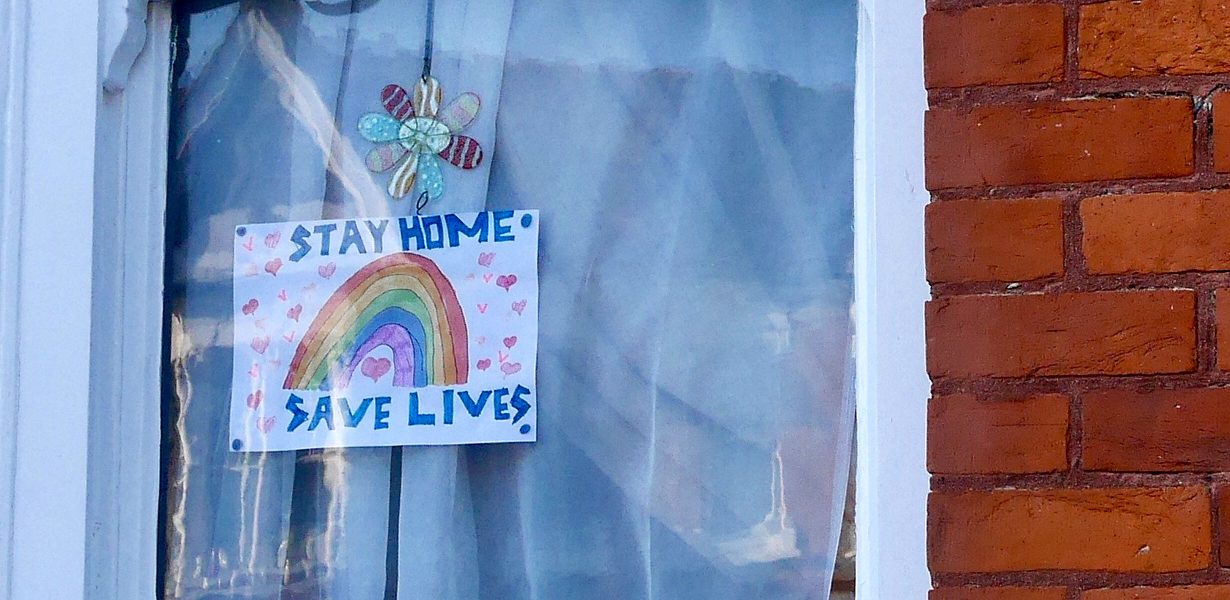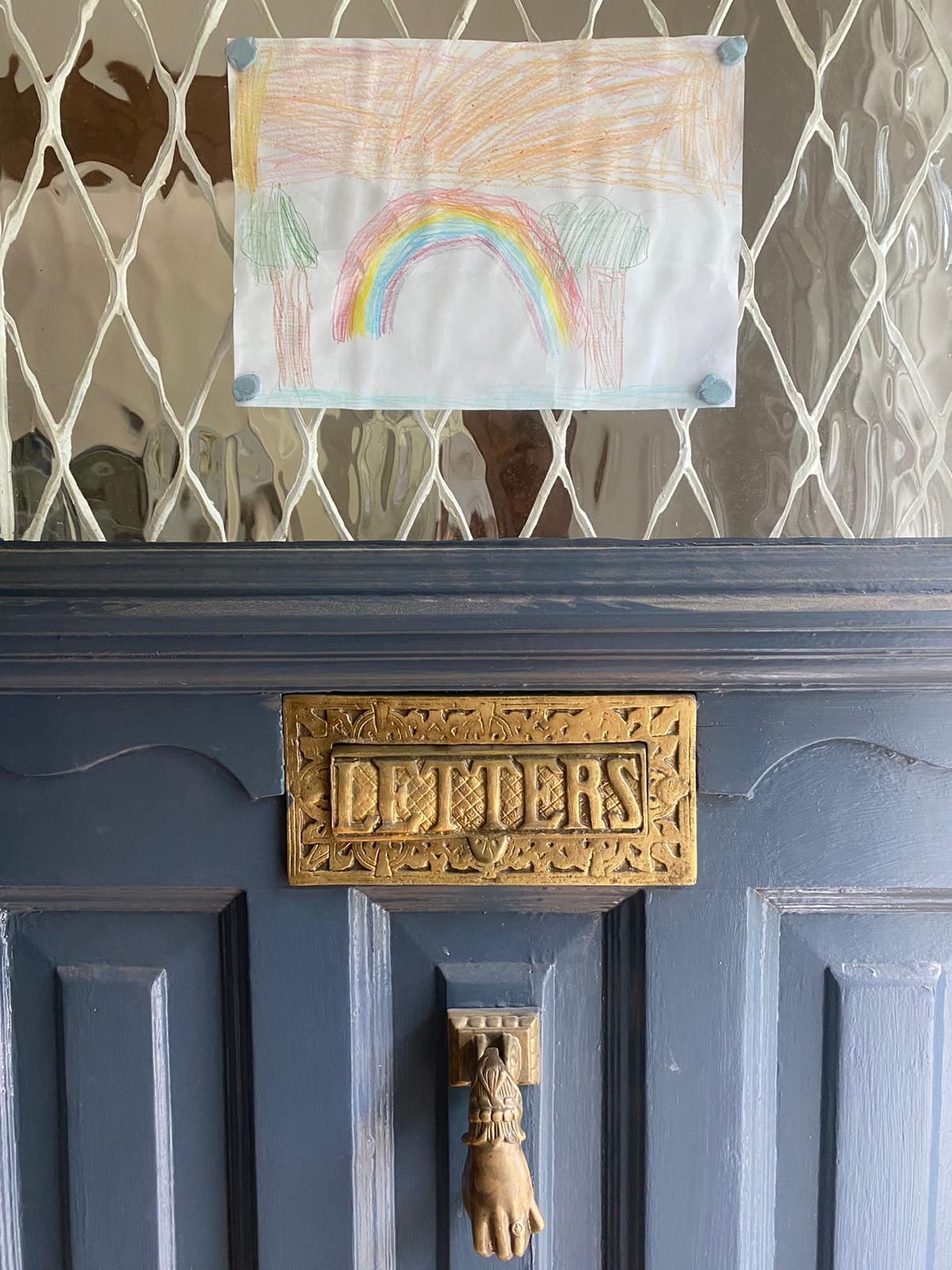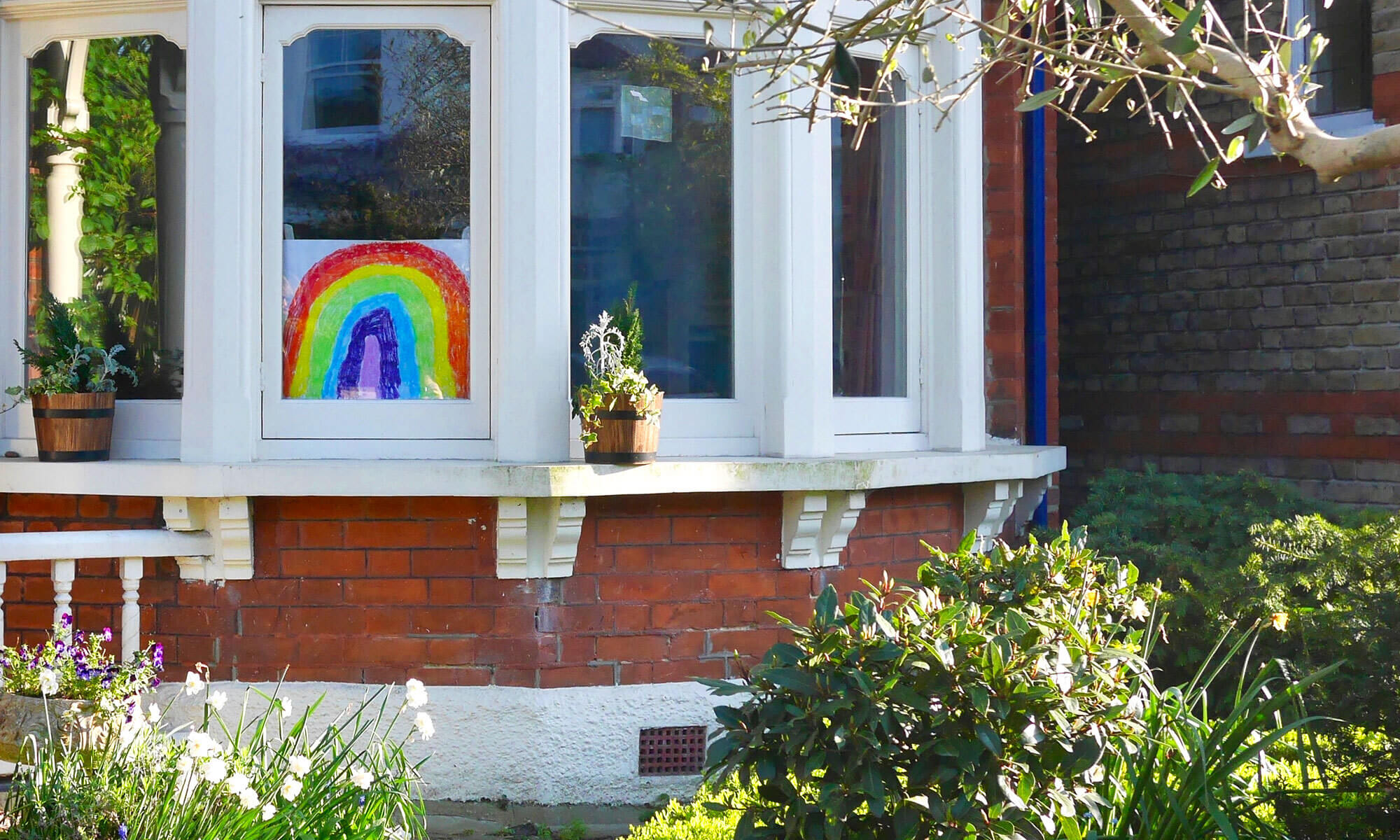The myths that have grown up around rainbows are numerous and diverse. A bridge to the ancestors in Japanese tradition, to the gods in Norse mythology; the king of heaven’s bow symbolising war in Hindu lore, a malevolent serpent in Australian Aboriginal thinking. Yet in Western culture the rainbow is more likely to represent freedom and peace, adopted by hippies and the gay-liberation movement alike. The Judeo-Christian God created the rainbow as a promise that it would never again visit the earth with a catastrophe the size of the Great Flood. Well, God-given or not, the world is facing a huge test in the face of the new coronavirus, and once again, at least in Britain, people, specifically children, have turned to rainbows as a symbol of solace.

On the quiet residential streets of lockdown London, it can seem that every house and flat in which a child lives has a homemade work of art depicting a rainbow taped in the window. Some are just the felt-tip or colour-pencil squiggles of a restless toddler, others more ambitious: I’ve seen paper collages, textile works, papier-mâché sculptures, Lego models and painted murals. Each creation a testament to the anxiety of isolation or the tedium of social distancing, each a tribute to medical staff who are still out there working. It was an initiative originally encouraged by schools, before taking on a life of its own, the rainbow registering as a modern folk-motif. That they are made by children makes it hard to be cynical about this display of mass unity in the way that one might be about the weekly ritualised clapping for key workers (adequate funding for the NHS would be the best applause, after all). It’s a sentiment (one you may think sentimental, of course) I felt for Ugo Rondinone’s project your age and my age and the age of the rainbow (2014–), which I saw in its 2017 Russian incarnation, for which the artist had invited children with disabilities from across the country to draw rainbows, the results then reproduced on a vast billboard outside Moscow’s Garage Museum. For Rondinone the rainbow has been a recurring obsession of some 30 years, used in sculptures, architectural installations and neon works backgrounding enigmatic phrases such as ‘Dog Days Are Over’ and ‘Our Magic Hour’. The Swiss artist’s your age and my age and the age of the rainbow therefore read as something more than the normal lip service to public outreach or educational engagement, a gesture instead steeped in generosity. For Rondinone, speaking in 2014, ‘It’s the spectrum of colours so it means everything and just encompasses everything. It’s a sign that everybody can recognise [and] I like that there’s no mystery about it.’

This accessibility and universality as an image no doubt explains its appeal to the children of Britain: a signal of proximity at a time when presence is forbidden. The rainbows often face each other across streets, each creation sending a greeting in the place of the children who cannot. So while the rainbow has long attracted artists in the romantic tradition for its mysterious nature (the poet Keats protested that the science of Isaac Newton would ‘unweave a rainbow’), here it’s the common qualities of the symbol, its memelike ubiquity, that are the draw.
London’s V&A museum has started to gather examples of this vernacular phenomenon as part of their policy of ‘rapid response’ collecting, yet it will be a wasted institutional memorial if these paper rainbows are no more than tokens of a passing moment. Rainbows have also historically heralded a new start – again, the Great Flood in the biblical telling – and it is this message that should really be taken from their collective use. ‘She saw in the rainbow the earth’s new architecture, the old, brittle corruption of houses and factories swept away, the world built up in a living fabric of Truth, fitting to the overarching heaven,’ wrote D.H. Lawrence in The Rainbow (1915). Lawrence was talking about sexual liberation from the confines of a suffocating society – a Victorian sensibility that dissipated in the aftermath of another cataclysmic period, the First World War – but his words can be easily recontextualised for 2020, where once again we should look to build something new out of the ashes of a global catastrophe.
